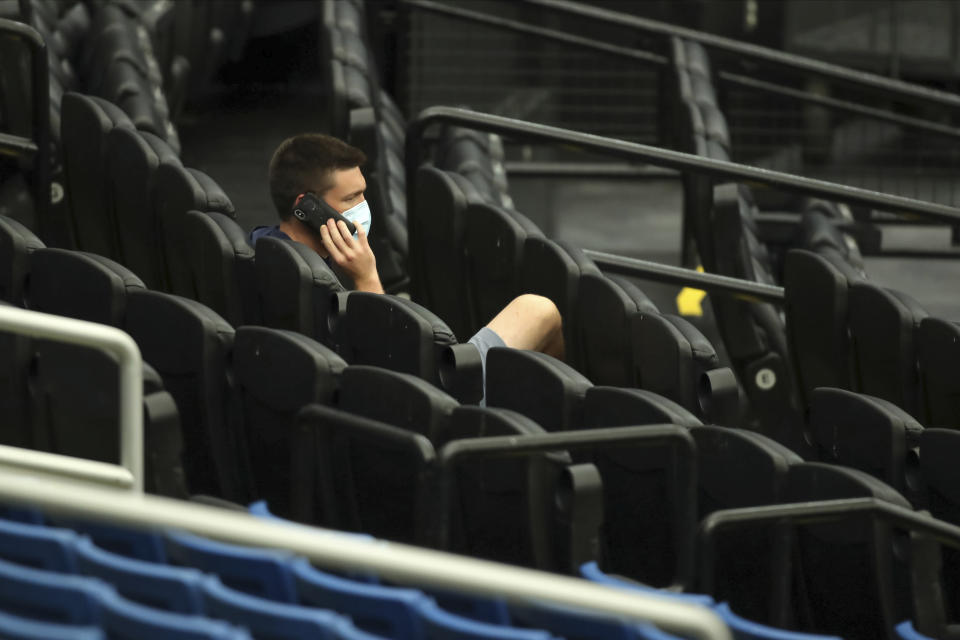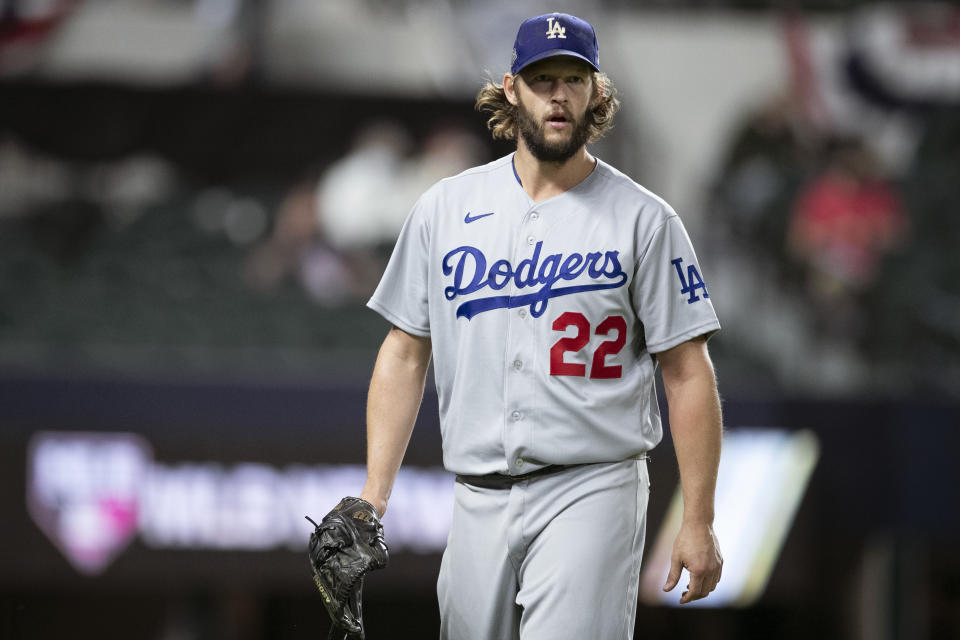Why Clayton Kershaw costs as much as the Rays’ whole World Series pitching staff
When the Los Angeles Dodgers and Tampa Bay Rays take the field tonight for World Series Game 1, they will be playing, first and foremost, for rings and the glory of a title — even in a shortened, strange season. But the two main overtones of the series will also clash right away.
Can Clayton Kershaw and the era of close-but-no-cigar Dodgers dominance he personifies break through with a championship? And what does this matchup of polar opposites portend for the future of baseball team economics?
Kershaw — a surefire future Hall of Famer and likely the best pitcher of his generation — makes $31 million a year on his current contract. And the entire pitching staff on the Rays’ World Series roster is under contract for … about $31 million a season.

Now, some caveats: The 2020 season wound up being played on prorated salaries because of the pandemic. So everyone made about 37 percent of what it says on their contracts, but it is easier to think about in the terms of the ink on the page. Also: Rays reliever Shane McClanahan actually made far less than even the prorated rookie minimum we used to calculate the total, as he just made his MLB debut in the postseason.
The common response to these sorts of facts is to marvel at the ingenuity of those plucky Rays and their front office maneuvering, or — on the darker side — to leverage it as evidence that every star player is overpaid.
Neither of those impulses tells the whole story, though. This fact is a product of baseball’s structure and the ongoing tug of war over how teams should be built. Here are a few of the reasons a $31 million arm can coexist with and, indeed, go toe-to-toe in the World Series against a band of 13 hurlers with a fraction of the negotiating power.
Consistency is expensive
For all the player development savvy and all the impressive trades the Rays utilized to build a terrifying, formidable bullpen in 2020, there is a good reason their methods seem so complicated and difficult: Because they are.
The Rays, led by GM Erik Neander, are renowned for discovering players who are better than the industry believed, or for helping players become better than they had been. This sometimes nets them out-of-nowhere gems like Pete Fairbanks, the 6-foot-6 reliever who closed out ALCS Game 7 after arriving from the Texas Rangers in a seemingly minor trade. Or World Series Game 1 starter Tyler Glasnow, a once shiny prospect who the Pittsburgh Pirates struggled to develop into a major league starter.
Relying on those efforts coming together in bunches, though, is hit or miss. The Dodgers, run by former Rays GM Andrew Friedman, also devote time and energy to building up unheralded talents (see Muncy, Max), but don’t have to live or die by the results. When their top prospects flourish, they don’t balk at paying the high arbitration salaries. When an opportunity arises to scoop up an established star and keep his consistent performance in town, they can spend for that assurance.
Despite the frustration of never reaching the pinnacle and actually winning the World Series, Kershaw and the Dodgers have been to the postseason eight straight years, which undeniably presents better odds at winning a title than making it three times in that span, as the Rays have.
And as the Wall Street Journal pointed out in highlighting the spending differences between the teams, 18 of the past 20 World Series have been won by teams with payrolls in the top half of the league.

The Rays intentionally do more with less
The Rays have the league’s third-lowest payroll this season — a $93.7 million plan that wound up being $28.7 once adjusted for the pandemic-shortened season. They are legitimately at a financial disadvantage from the Dodgers — whose $225.5 million payroll still paid out $95 million under this season’s circumstances.
Whether they need to be spending this little is a difficult question to answer, but owner Stuart Sternberg is worth $800 million and is sitting on an investment he purchased for $200 million that is now estimated to be worth more than $1 billion.
The decision to build a team with these more interchangeable puzzle pieces is at least partially a choice of thrift.
The strategies get lumped under the catch-all term “analytics” on broadcasts or described as some sort of opaque wizardry, and many do function to improve the team’s chances. But they often have one fairly simple element in common: Spreading responsibility and opportunity around the roster more, and more carefully. Put another way: They invest less trust, and usually less money, in each individual player.
Rays starting pitchers threw only 4.3 innings per outing. And Glasnow, the team’s leader, tossed only 5.2 innings per start. Kershaw, meanwhile, even operating below his career averages, went 5.8 innings per start in 2020.

Because Kershaw is worth it
One reason Kershaw goes longer in games (sometimes to his detriment in October) is that he is simply better than anyone the Rays have, and has been for a decade. Since 2011, his worst ERA is 2019’s 3.03 mark, still 37 percent better than league average.
He is a metronome of greatness, changing along the way to maintain his dominance amid declining velocity and shifts in the nature of hitting. He is also a face for the franchise and an avatar for its journey. The Rays do not have one of those, not in the same way. They traded even Evan Longoria — the hero of their first World Series run — and cashed out on David Price in a trade before he reached free agency.
Again, some of that is just a realistic understanding of their chances at signing star players. Still, cheering for the Rays is a different experience than cheering for the Dodgers or the AL East juggernauts with which Tampa has to contend. The new faces and novel strategies can be completely thrilling, especially when they lead to a rampage through the playoffs, but as an ongoing entertainment product, many people find it easier to latch on to a consistent character.
That’s why Kershaw’s name is in the headline, and why his story has so many more chapters than the Rays’ does.
More from Yahoo Sports:
Wetzel: Zeke, Cowboys look miserable in first game without Dak
NFL power rankings: Can Belichick and Cam fix Patriots’ woes?
Paylor: Rest of AFC should be terrified of Chiefs adding Bell
Shop MLB gear on Breaking T
Yahoo Sports is committed to finding you the best products at the best prices. We may receive a share from purchases made via links on this page. Pricing and availability is subject to change.

 Yahoo News
Yahoo News 

